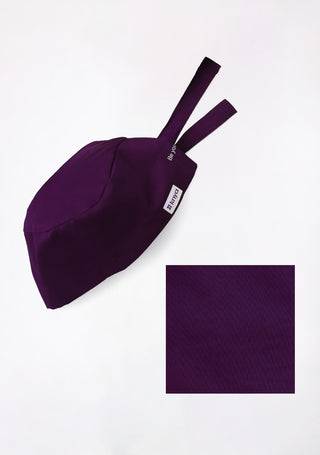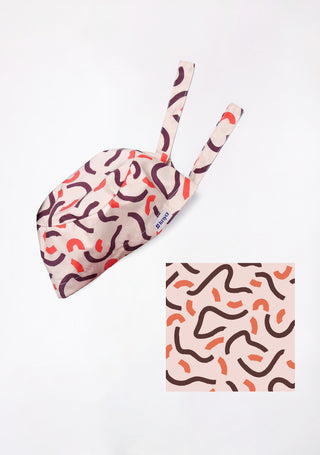Picture a doctor. What’s the first thing that comes to mind? A white coat? A reassuring presence? Perhaps, but chances are, you also envision a stethoscope draped around their neck. This simple yet powerful instrument has been a symbol of medicine for over two centuries. Despite the rise of advanced medical technology, the stethoscope remains an indispensable tool for healthcare professionals worldwide.But why does this old-school device continue to hold its ground in an era of AI-powered diagnostics, ultrasounds, and portable ECGs? The answer lies in its simplicity, reliability, and the irreplaceable human connection it fosters between doctor and patient.
The Story of the Stethoscope
The story of the stethoscope begins in 1816 with a French physician named René Laennec. Faced with the challenge of examining a female patient’s chest without making direct contact, Laennec rolled up a piece of paper into a tube and placed one end on her chest and the other to his ear. To his surprise, the sounds of the heart and lungs were amplified, leading him to develop the first wooden monaural stethoscope.
Since then, the stethoscope has evolved significantly—from the binaural (two-eared) version in the 1850s to the Littmann design in the 1960s, which refined acoustics and comfort. Today, digital stethoscopes with noise cancellation and Bluetooth connectivity exist, yet the fundamental principle remains unchanged: listening to the body’s internal sounds to assess health.
The Stethoscope’s Role in Clinical Diagnosis
At its core, the stethoscope is a diagnostic tool, allowing doctors to listen to the body’s internal orchestra—heartbeats, lung sounds, and even intestinal movements. This process, known as auscultation, remains a crucial part of physical examinations.
Cardiac Assessments
One of the primary uses of a stethoscope is to evaluate heart sounds. By placing the stethoscope on various areas of the chest, doctors can detect:
- Murmurs: Abnormal heart sounds caused by turbulent blood flow, possibly indicating valve disorders.
- Irregular rhythms: Clues to conditions like atrial fibrillation.
- Pericardial rubs: A scratching sound that may suggest pericarditis, an inflammation of the heart’s lining.
Enhance your diagnostic capabilities. Book your Knya's 6sense Stethoscope and experience the difference in quality and performance.
Lung Examination
Respiratory sounds provide valuable insights into a patient’s lung health. Using a stethoscope, doctors can detect:
- Wheezing: A sign of airway obstruction, often found in asthma or COPD.
- Crackles: Indicating fluid in the lungs, seen in pneumonia or heart failure.
- Diminished breath sounds: A possible sign of collapsed lungs (pneumothorax) or pleural effusion.
Abdominal and Vascular Sounds
Beyond the heart and lungs, the stethoscope is also used to listen for bowel sounds and vascular abnormalities:
- Hyperactive bowel sounds may indicate gastrointestinal issues like diarrhea or obstruction.
- Aortic bruits can signal aneurysms or arterial blockages.
Despite the rise of imaging technologies, these fundamental auscultation skills allow physicians to quickly gather essential diagnostic clues in real time.
The Stethoscope: More Than Just a Diagnostic Tool
While the stethoscope’s primary function is medical, its impact extends far beyond diagnosis.
A Symbol of Trust and Reassurance
For many patients, a doctor wearing a stethoscope represents professionalism, competence, and care. The simple act of placing the stethoscope on a patient’s chest creates a moment of human connection—a silent reassurance that they are being heard, both literally and figuratively.
Medical Training and Skill Development
The stethoscope remains a crucial part of medical education. Medical students spend countless hours mastering auscultation skills, as it sharpens their ability to detect subtle abnormalities. In many ways, it’s a rite of passage—one of the first tangible tools students use to feel like real doctors.
Portability and Accessibility
Unlike large imaging devices, a stethoscope fits in a pocket, making it a vital tool for physicians on the move. Whether in a rural clinic, a battlefield, or an ambulance, the stethoscope allows quick assessments in situations where high-tech equipment isn’t available.
Low Cost, High Utility
In an age where healthcare costs are soaring, the stethoscope remains an affordable, cost-effective diagnostic instrument. It requires no electricity, no software updates, and no complex training—just a keen ear and a well-trained mind.
Personalize your practice. Shop for our new 6sense Stethoscope collection, featuring three beautiful color options.
The Stethoscope in the Digital Age
With the advancement of artificial intelligence (AI) and smart medical devices, some argue that the stethoscope is becoming obsolete. After all, why rely on human ears when digital stethoscopes can amplify, record, and analyze heart sounds with precision?
While digital stethoscopes certainly enhance diagnostic capabilities, they don’t replace the traditional stethoscope entirely. Here’s why:
AI Complements, But Doesn’t Replace Human Judgment
AI-powered diagnostics are excellent at detecting patterns, but they lack clinical intuition. A seasoned doctor can combine auscultation findings with a patient’s history, symptoms, and overall presentation—something AI, at least for now, cannot fully replicate.
Dependability in Low-Tech Environments
Not every hospital or clinic has access to expensive diagnostic machines. In resource-limited settings, the stethoscope remains one of the most reliable tools available.
Training Future Doctors
If we fully replace traditional auscultation with digital tools, will future doctors lose the ability to detect subtle diagnostic clues with their own ears? Medicine isn’t just about data—it’s about understanding the human body holistically.
The Stethoscope Isn’t Going Anywhere
Despite the rise of sophisticated diagnostic tools, the stethoscope continues to prove its worth. It’s simple yet powerful, affordable yet effective, and, most importantly, it fosters the critical human connection between doctor and patient.
It’s not just about listening to heartbeats or lung sounds—it’s about being present, engaging with the patient, and using every sense to make the best possible clinical decisions.
So, while we embrace the future of medicine with AI, digital monitoring, and remote diagnostics, let’s not forget the enduring power of a tool that has stood the test of time. The stethoscope remains, and will likely always be, a cornerstone of medical practice.
And let’s be honest—what’s a doctor without that reassuring loop of tubing around their neck? It’s more than just an instrument. It’s a legacy.












